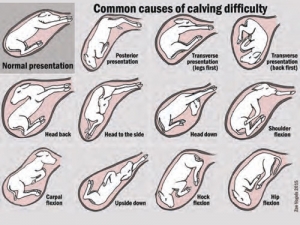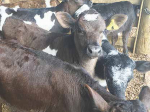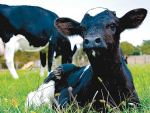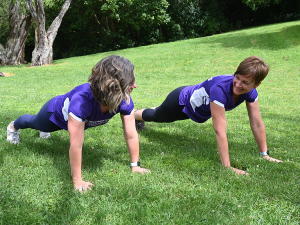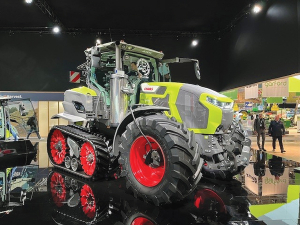Dystocia can result in reproductive problems such as retained foetal membranes, uterine infections and increased calving intervals, which subsequently contribute to poor herd performance.
The long-term impact on calves born to dams suffering dystocia has been shown by research in the United States.
Calves with an assisted birth had decreased milk production later in life compared to those born with a normal, unassisted delivery.
Why does dystocia happen?
There are numerous reason for dystocia, the most common being:
The calf is too big and /or the dam is too small
This is due to a small or disproportionate pelvic area (birth canal).
It occurs more commonly in heifers and is often related to inadequate nutrition during the pre-pubertal and post-pubertal phases of growth.
Heifers should be managed appropriately so that they calve at about 85% of their mature body weight with a body condition of 4.5-5.5 (1-8 scale).
Appropriate sire selection using Australian Breeding Values (ABVs) or calving ease bulls will help minimise over-sized calves in heifers.
Excessive body condition score
Over-conditioned heifers and cows are at an increased risk of dystocia as fat deposited around the birth canal reduces the space within the pelvis.
Animals calving in body condition score >5.5 (1–8 scale) are at an increased risk of dystocia.
Torsion of the uterus (twisted uterus)
This is often associated with oversized calves. There may be from 180∞ to 720∞ twist at the level of the vagina, which prevents foetal fluids and membranes from passing through the vagina and vulva.
Consequently stage 1 labour will appear prolonged with no progression to stage 2.
If left undetected the cow can become sick over several days due to metritis as a result of the death of the calf.
A distinct ‘corkscrew’ effect in the vagina can be felt which may be clockwise or anticlockwise.
Prompt veterinary attention is required to untwist the uterus and enable delivery of the calf.
Sometimes a caesarean section is required if the twist is greater than 360∞.
Weak or absent uterine contractions
This can happen in instances of milk fever (hypocalcaemia). Calcium is required for the contraction of muscles within the body, including the uterus.
Uterine muscle contractions are essential for the calf to be delivered normally. Cows may show other signs of hypocalcaemia such as inability to stand and bloat.
The cow cannot progress from stage 1 labour even though the cervix may be fully dilated.
The prolonged birth often results in a dead calf. Prompt treatment for milk fever is required and, if the calf is alive and there are no other reasons for dystocia, a natural delivery may follow.
Abnormal delivery position of the foetus
The normal delivery position of a calf just prior to delivery is shown in the diagram. The front feet should be presented first, followed by the head and neck, shoulders, hips and hind legs.
The calf should be orientated with its spine upwards at all times. A malpresentation refers to when the calf is coming hind legs first.
A malposture refers to when the head and legs of the calf are situated in abnormal positions relative to the ‘normal’ delivery position (for example head flexed to the side); and a malposition refers to the position of the calf relative to the dam, for example it is upside down or on its side.
Difficult deliveries can be a combination of these and can be very challenging to resolve.
It is difficult to estimate how much dystocia costs the Australian dairy industry. Some reports suggest an annual cost of A$44 million.
Fertility is a major contributor to this, along with cow losses, labour and veterinary costs. No more than 3% of adult dairy cows and 6% of heifers should require assistance at calving.
Accurate calving records allow on-farm monitoring of these events. Veterinary advice should be sought if the level of dystocia is higher than this.
• Dr Gemma Chuck is a dairy vet working at The Vet Group in south west Victoria. She has a special interest in calf rearing and is currently undertaking her PhD in this area at The University of Melbourne.

